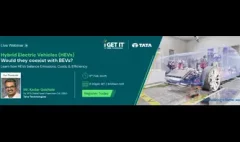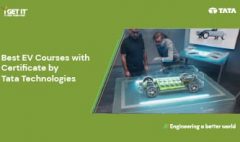Top 35 Electric Vehicle Engineer Interview Questions & Answers
November 28, 2023 2024-11-11 13:18Top 35 Electric Vehicle Engineer Interview Questions & Answers
Top 35 Electric Vehicle Engineer Interview Questions & Answers
Are you an engineering student or professional looking to embark on an exciting career in the electric vehicle (EV) industry? As the world shifts towards sustainable transportation, the demand for skilled EV engineers is skyrocketing. To land your dream job in this dynamic field, you need to ace the EV engineer interview. In this comprehensive guide, we will equip you with the knowledge and confidence to excel in your EV engineer interview. We will delve into the most commonly asked interview questions, provide expert tips, and offer insights into the rapidly evolving EV industry. So, let’s get started on your path to success!
Table of Contents
Introduction: The Rise of Electric Vehicles
The automotive industry is undergoing a revolutionary transformation with the rapid rise of electric vehicles (EVs). As concerns about climate change and air pollution intensify, governments and consumers are increasingly embracing clean and sustainable transportation solutions. EVs, powered by electricity stored in rechargeable batteries, offer numerous advantages over traditional internal combustion engine (ICE) vehicles. They are environmentally friendly, highly efficient, and provide a smooth and quiet driving experience. According to industry reports, global EV sales reached a record 6.6 million units in 2021, and this number is expected to grow exponentially in the coming years. This surge in demand has created a massive need for skilled EV engineers who can design, develop, and optimize electric vehicle systems. From battery technology to power electronics and motor control, EV engineers play a pivotal role in shaping the future of transportation.
To secure a promising career in the EV industry, it is crucial to excel in the EV engineer interview. The interview process is your opportunity to showcase your knowledge, skills, and passion for electric vehicles. By preparing thoroughly and familiarizing yourself with common interview questions, you can impress potential employers and position yourself as an asset in the rapidly evolving EV landscape.
Basic Interview Questions for EV Engineers
To help you prepare for your EV engineer interview, let’s explore some basic interview questions commonly asked in the field. These questions will assess your fundamental knowledge of electric vehicles, your ability to communicate technical concepts, and your understanding of the advantages and challenges associated with EV technology.
- What is an Electric Vehicle (EV)?
Answer: An electric vehicle is an automobile that utilizes one or more electric motors for propulsion instead of an internal combustion engine. EVs are powered by electricity stored in rechargeable batteries, which can be recharged using external power sources such as charging stations or electrical outlets. Unlike traditional gasoline-powered vehicles, EVs do not emit tailpipe pollutants and offer higher energy efficiency.
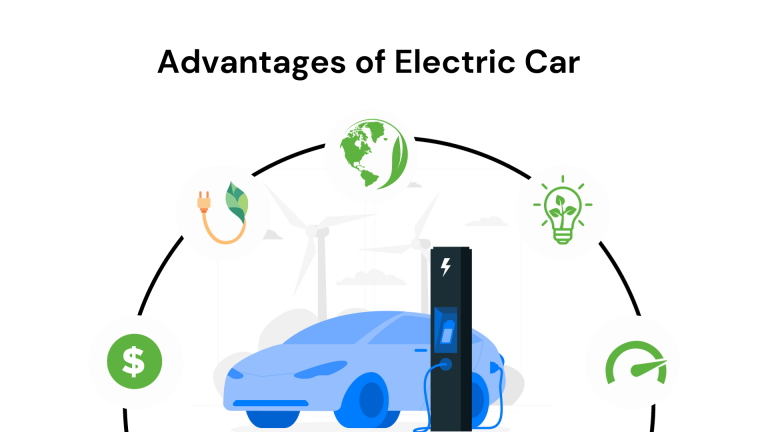
What are the advantages of Electric Vehicles over internal combustion engine vehicles?
Answer: Electric vehicles offer numerous advantages over internal combustion engine vehicles. Some key advantages include:
- Environmental Benefits: EVs produce zero tailpipe emissions, reducing air pollution and greenhouse gas emissions. They play a crucial role in combating climate change and improving air quality.
- Energy Efficiency: EVs have higher energy efficiency compared to internal combustion engines. Electric motors convert a higher percentage of electrical energy from the battery into actual propulsion, resulting in less energy waste.
- Lower Operating Costs: EVs generally have lower operating costs than gasoline-powered vehicles. Electricity is typically cheaper than gasoline on a per-mile basis, and EVs require less maintenance due to fewer moving parts.
- Energy Independence: EVs can be powered by renewable energy sources such as solar or wind power, reducing dependence on fossil fuels and promoting a more sustainable energy ecosystem.
- How do you explain the concept of regenerative braking?
Answer: Regenerative braking is a technology used in electric and hybrid vehicles that allows the vehicle to recover and store energy while decelerating or braking. When the driver applies the brakes, the electric motor in the vehicle acts as a generator, converting the kinetic energy of the moving vehicle into electrical energy. This electrical energy is then stored in the vehicle’s battery for later use, reducing energy waste and improving overall efficiency.
Explanation: Regenerative braking not only enhances the energy efficiency of electric vehicles but also helps extend their driving range. By recovering and reusing energy that would otherwise be lost as heat in traditional braking systems, regenerative braking plays a crucial role in maximizing the efficiency of electric vehicle systems.
- What are the different types of power converters used in EVs?
Answer: Power converters play a vital role in converting and managing electrical energy in electric vehicles. There are several types of power converters used in EVs, including:
- DC-DC Converters: DC-DC converters are used to convert high-voltage DC power from the battery to low-voltage DC power for auxiliary systems such as lighting, window motors, and wiper motors.
- Isolated DC-DC Converters: Isolated DC-DC converters use transformers to provide galvanic isolation between the input and output side. They are commonly used in EVs for voltage conversion and isolation purposes.
- AC-DC Converters: AC-DC converters are used to convert alternating current (AC) power from the grid or charging stations to direct current (DC) power for charging the vehicle’s battery.
- DC-AC Inverters: DC-AC inverters convert DC power from the battery to AC power to drive the electric motor. They play a crucial role in controlling the speed and torque of the motor.
- Onboard Chargers: Onboard chargers convert AC power from external charging sources into DC power to recharge the vehicle’s battery. They ensure that the battery receives the correct voltage and current for charging.
These power converters form an integral part of the electrical system in EVs, enabling efficient power flow and optimal utilization of electrical energy.
- What is the full form of EV?
Answer: The full form of EV is Electric Vehicle.
Explanation: Electric vehicles are vehicles that are powered by one or more electric motors instead of an internal combustion engine. They rely on electricity stored in batteries or obtained from other sources such as hydrogen fuel cells.
- How many types of electric vehicles are there? Name them.
Answer: There are four main types of electric vehicles:
- Battery Electric Vehicles (BEVs)
- Hybrid Electric Vehicles (HEVs)
- Plug-in Hybrid Electric Vehicles (PHEVs)
- Fuel Cell Electric Vehicles (FCEVs)
Explanation: Each type of electric vehicle has its own powertrain configuration and characteristics. BEVs rely solely on electric motors and batteries for propulsion, while HEVs combine electric motors with internal combustion engines. PHEVs have a larger battery pack and can be charged externally, and FCEVs use hydrogen fuel cells for power.
- Who invented the first electric vehicle?
Answer: The first electric vehicle was invented by Thomas Davenport, an American blacksmith and inventor, in 1834.
Explanation: Thomas Davenport developed a small electric motor and used it to power a small-scale electric car. His invention laid the foundation for the development of electric vehicles as we know them today.
- What is a battery electric vehicle?
Answer: A battery electric vehicle, also known as a BEV, is a type of electric vehicle that relies solely on electric motors for propulsion. It is powered by electricity stored in rechargeable batteries and does not have an internal combustion engine.
Explanation: BEVs produce zero tailpipe emissions and need to be plugged into an external power source, such as a charging station or an electrical outlet, to recharge their batteries. They offer a cleaner and more sustainable alternative to traditional gasoline-powered vehicles.
- What is a fuel cell electric vehicle?
Answer: A fuel cell electric vehicle, also known as an FCEV, is a type of electric vehicle that uses hydrogen fuel cells to generate electricity. These fuel cells combine hydrogen and oxygen to produce electricity, with water vapor being the only byproduct.
Explanation: FCEVs offer long driving ranges and quick refuelling times, similar to traditional gasoline-powered vehicles. They produce zero tailpipe emissions and can help reduce dependence on fossil fuels.
- When did electric vehicles see their first decline?
Answer: The market demand for electric vehicles started declining in the early 20th century, primarily due to advancements in internal combustion engine technology and the availability of cheap gasoline.
Explanation: Gasoline-powered vehicles offered longer driving ranges and the convenience of refuelling at gas stations, making them more popular than electric vehicles at the time. As a result, electric vehicles lost their market share and took several decades to regain popularity.
- Define a brushless DC motor.
Answer: A brushless DC motor is an electric motor that uses a permanent magnet rotor and electronic commutation to provide power and control. It operates on the principle of electromagnetic induction and does not require physical brushes for commutation.
Explanation: Brushless DC motors offer higher efficiency, lower maintenance requirements, and longer life compared to brushed DC motors. They are widely used in electric vehicles for their reliability and performance.
- What are the main components of an electric vehicle?
Answer: The main components of an electric vehicle are the electric motor, battery pack, power electronics components, onboard charger, thermal management system, vehicle control unit (VCU), and DC-DC converter.
Explanation: Each component plays a crucial role in the operation and performance of the electric vehicle. The electric motor provides propulsion, the battery pack stores energy, power electronics components manage the flow of electrical energy, the onboard charger converts AC power to DC power for charging, the thermal management system regulates temperature, the VCU controls various functions, and the DC-DC converter ensures proper voltage supply.
- What is a DC-DC converter?
Answer: A DC-DC converter is a device that converts high voltage DC supply from the battery to low voltage supply. It is used to charge low-voltage batteries and power auxiliary systems in the electric vehicle.
Explanation: The DC-DC converter ensures that the different voltage requirements of various systems in the vehicle are met efficiently. It converts the high voltage DC power from the main battery to the appropriate voltage level required by auxiliary systems such as headlamps, window motors, and wiper motors.
Intermediate Interview Questions for EV Engineers
As you progress in your EV engineer interview, you can expect more in-depth questions that assess your technical knowledge, problem-solving abilities, and leadership skills. Let’s explore some intermediate interview questions commonly asked in the field.
- What sort of electric motors are used in electric vehicles?
Answer: Electric vehicles commonly use Permanent Magnet Synchronous Motors (PMSM), Induction Motors, and Switched Reluctance Motors (SRM) for their efficiency and suitability across various applications.
Explanation: These motors offer distinct advantages in terms of efficiency, performance, and cost-effectiveness, catering to different EV designs and driving requirements.
- Why are lithium-ion batteries used in electric vehicles?
Answer: Lithium-ion batteries are favoured in EVs due to their high energy density, lightweight construction, and efficient charge-holding capability, meeting the power demands for extended driving ranges.
Explanation: The specific chemistry and properties of lithium-ion batteries make them well-suited for powering electric vehicles, offering a balance between energy storage, weight, and performance.
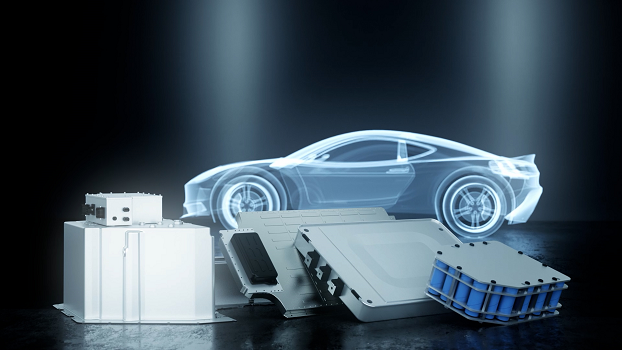
- What is an electric vehicle’s battery management system?
Answer: A Battery Management System (BMS) in an EV oversees critical aspects of the battery pack such as voltage, temperature, and state of charge, ensuring safety and optimizing performance.
Explanation: BMS plays a pivotal role in maintaining battery health, preventing overcharging or overheating, and maximizing the lifespan of the battery pack in electric vehicles.
- Why are electric vehicles more expensive than fuel engine vehicles?
Answer: The higher cost of EVs is mainly due to costly battery technology, limited production scale, and specialized components like electric motors and power electronics.
Explanation: These factors contribute significantly to the upfront cost of electric vehicles, making them more expensive than traditional internal combustion engine vehicles.
- Do electric vehicles harm the environment?
Answer: EVs produce zero tailpipe emissions, but their overall environmental impact depends on factors like electricity sources and battery manufacturing methods.
Explanation: While EVs don’t emit pollutants during operation, their environmental impact varies based on the source of electricity used for charging and the production processes of their batteries.
- What type of motor control approach is used in EVs?
Answer: Electric vehicles commonly employ sophisticated motor control methods like Field-Oriented Control (FOC) or Direct Torque Control (DTC) for precise management of torque and speed.
Explanation: FOC and DTC techniques ensure efficient utilization of electric motor power, offering smooth acceleration and optimized performance in different driving conditions.
- How long does it take to charge an EV battery pack?
Answer: Charging time varies based on battery capacity and charger type. Fast chargers can reach 80% charge in about 30 minutes, while standard chargers might take several hours.
Explanation: Charging times can vary significantly depending on the EV’s battery size and the type of charging infrastructure available, impacting convenience and practicality for EV users.
- What is the C rating of the battery in an electric vehicle?
Answer: The C rating signifies a battery’s charge and discharge capability relative to its capacity, with higher C ratings allowing for faster charging or discharging.
Explanation: A higher C rating indicates the battery’s ability to handle rapid charge or discharge rates, impacting the performance and efficiency of the electric vehicle.
- What are DTC and FOC in EVs?
Answer: DTC (Direct Torque Control) and FOC (Field-Oriented Control) are advanced motor control techniques used in EVs to precisely manage torque and speed for optimized performance.
Explanation: These motor control methods ensure precise handling of torque delivery, contributing to better efficiency and control in electric vehicles.
- What exactly is cell balance and why is it necessary?
Answer: Cell balance ensures uniform charging and discharging among battery cells, enhancing overall battery life and performance by preventing overcharging or discharging.
Explanation: Cell balance is crucial in maintaining battery health, ensuring each cell within the battery pack operates evenly to maximize efficiency and longevity.
- How do you handle surprises and challenges in an engineering project?
Answer: Handling surprises and challenges in an engineering project requires a combination of problem-solving skills, adaptability, and effective communication. When faced with unexpected obstacles, it is important to remain calm and approach the situation with a systematic mindset. Here’s how you can answer the question:
“When encountering surprises or challenges in an engineering project, I approach them methodically:
- Assessment: I analyze the issue, identifying its root cause and implications to make informed decisions.
- Team Collaboration: Engaging my team and stakeholders, I gather diverse perspectives for innovative solutions.
- Contingency Planning: I develop a well-structured contingency plan, allocating resources and setting realistic timelines.
- Transparent Communication: I maintain open dialogue with the team and stakeholders, ensuring everyone is informed and involved in the resolution process.
- Learning: Post-resolution, I reflect on the experience, extracting lessons to enhance future project strategies.
By following this systematic approach, I navigate unexpected hurdles in engineering projects effectively while promoting teamwork and continual improvement.
- What resources do you utilize to stay updated with the latest developments in EV technology?
Answer: In the rapidly evolving field of EV technology, it is crucial for engineers to stay updated with the latest advancements and trends. Here are some resources you can utilize to stay abreast of developments in EV technology:
- Industry Publications and Journals: Subscribe to reputable industry publications and journals that focus on electric vehicles, renewable energy, and sustainable transportation. These publications often feature cutting-edge research, case studies, and interviews with industry experts.
- Online Forums and Communities: Participate in online forums and communities dedicated to EV technology. Engage in discussions, share knowledge, and learn from fellow professionals and enthusiasts in the field.
- Professional Associations and Conferences: Join professional associations and attend conferences related to electric vehicles and sustainable transportation. These platforms provide opportunities to network with industry leaders, attend informative sessions, and gain insights into emerging technologies.
- Online Learning Platforms: Enroll in online courses or certifications that cover topics related to electric vehicles. Our platform iGETIT offers comprehensive EV engineering courses that provide in-depth knowledge and practical skills.
- Research Papers and Technical Reports: Stay updated with the latest research papers and technical reports published by universities, research institutions, and industry leaders. These resources offer valuable insights into cutting-edge technologies, methodologies, and best practices.
- Webinars and Podcasts: Attend webinars and listen to podcasts hosted by experts in the EV industry. These interactive sessions provide a platform to learn from industry thought leaders, ask questions, and gain insights into emerging trends.
By demonstrating your commitment to continuous learning and staying updated with the latest developments, you showcase your passion for the field and your dedication to professional growth as an EV engineer.
- How do you ensure accuracy and minimize mistakes in your engineering work?
Answer: In my engineering work, I prioritize accuracy and error reduction through various strategies. Thoroughly reviewing project documentation and specifications, I validate assumptions and meticulously check calculations for precision. Leveraging technology tools like simulations, I pre-emptively detect issues, optimizing designs before implementation. Encouraging collaboration, I seek peer feedback for accuracy, fostering a culture of improvement. Meticulous documentation of each engineering step ensures traceability and error identification. With attention to detail, I aim for high-quality, error-free engineering output by employing these strategies consistently.
This response demonstrates your commitment to precision, your proactive approach to error prevention, and your belief in continuous improvement, all of which are critical qualities for an EV engineer.
Advanced Interview Questions for EV Engineers
As you progress in your EV engineer interview, expect to encounter more advanced questions that assess your in-depth knowledge, problem-solving abilities, and your ability to innovate in the EV industry. Let’s explore some advanced interview questions commonly asked in the field.
- What is a nuclear diamond battery?
Answer: A nuclear diamond battery is a unique type of battery that harnesses the energy generated from the radioactive decay of isotopes held within diamonds to produce electricity.
Explanation: These batteries have the potential for long-lasting, low-power applications, leveraging the slow decay rate of isotopes to generate continuous energy.
- How long can a nuclear diamond battery last?
Answer: Theoretically, nuclear diamond batteries could last for thousands of years due to the slow decay rate of the isotopes within the diamonds, providing sustained low-power energy.
Explanation: The extended lifespan of these batteries makes them promising for applications where long-term, low-maintenance power sources are required.
- What are the drawbacks of lithium-ion batteries?
Answer: Drawbacks of lithium-ion batteries include degradation over time, reliance on scarce resources, safety concerns, and challenges associated with recycling and disposal.
Explanation: Despite their advantages, lithium-ion batteries face limitations related to their lifespan, resource requirements, safety issues, and environmental impact during disposal.
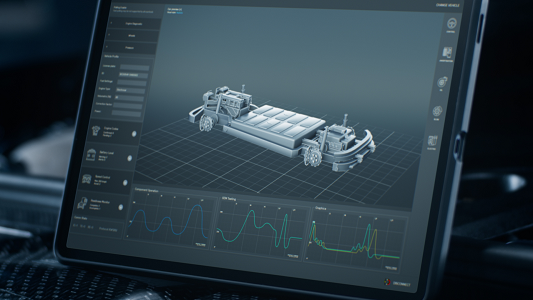
- Explain the working principle of lithium-ion batteries.
Answer: Lithium-ion batteries operate by the movement of lithium ions between electrodes during charge and discharge cycles, storing and releasing energy efficiently.
Explanation: When charging, lithium ions move from the positive electrode to the negative electrode and vice versa during discharge, enabling the storage and release of electrical energy.
- How much emissions does a gasoline-powered car produce compared to an electric vehicle?
Answer: Gasoline-powered cars emit pollutants like CO2, nitrogen oxides, and particulate matter, whereas electric vehicles produce zero tailpipe emissions.
Explanation: EVs contribute significantly less to air pollution as they don’t produce emissions during operation, reducing environmental impact.
- Name some hybrid electric vehicle models.
Answer: Popular hybrid electric vehicle models include Toyota Prius, Honda Insight, Ford Fusion Hybrid, and Chevrolet Volt, incorporating both electric and internal combustion engine technologies.
Explanation: These models blend the benefits of electric power with traditional internal combustion engines, offering improved fuel efficiency and reduced emissions.
- What is your idea of a successful engineering team?
Answer: I believe a thriving engineering team hinges on effective communication, collaboration, and a shared purpose. Open communication channels foster idea exchange and swift problem-solving. Collaborating harnesses diverse skills, nurturing continual learning. Aligning around a shared goal fuels our motivation and engagement. Embracing diversity generates innovative solutions. Being adaptable and resilient in challenges drives continuous improvement. These qualities create a supportive and results-driven environment, enabling us to consistently deliver high-quality outcomes.
This response showcases your understanding of the key factors that contribute to a successful engineering team and highlights your ability to collaborate, communicate effectively, and drive results.
- Describe the steps you take when developing plans for a project.
Answer: When crafting project plans, I methodically follow a structured approach to ensure a comprehensive and successful project outcome:
- Understanding Objectives: I delve into project goals, requirements, and stakeholder needs, clarifying any uncertainties through thorough discussions.
- Defining Scope and Deliverables: Collaborating closely with stakeholders, I outline clear project scopes, milestones, and performance metrics, setting achievable timelines.
- Risk Assessment: Conducting a thorough risk analysis, I identify and address potential technical, operational, and environmental risks, devising contingency plans.
- Creating Work Breakdown Structure (WBS): I construct a detailed WBS, breaking tasks into manageable parts, aiding resource allocation and progress tracking.
- Estimating Resources and Budget: Carefully estimating needed resources and costs, aligning them with project goals to develop an appropriate budget.
- Sequencing and Scheduling: Establishing task dependencies, I create a visual project schedule, identifying critical paths and optimizing resource use.
- Communication Planning: Crafting a communication strategy, I define channels and stakeholders, ensuring a smooth information flow and timely updates.
- Monitoring and Control: Implementing robust monitoring systems, I track progress, identify deviations, and take corrective actions promptly.
Following these steps guarantees well-defined, achievable plans, ensuring efficient execution, risk mitigation, and successful project delivery.
This response demonstrates your proficiency in project planning, risk management, resource allocation, and effective communication, all essential skills for an EV engineer.
- How do you handle surprises that arise when working on a project?
Answer: When confronted with unexpected surprises in a project, I adopt a proactive, solution-oriented approach:
- Assessment: I evaluate the surprise’s nature and impact, gathering data and consulting team members to understand implications on timelines, budgets, and deliverables.
- Resource Prioritization: I swiftly prioritize tasks, reallocating resources to manage the surprise while minimizing overall disruption.
- Collaboration and Communication: I engage stakeholders and experts, fostering an open dialogue for collaborative problem-solving.
- Alternative Strategies: Exploring various solutions and contingency plans, I adapt timelines or approaches to meet project objectives.
- Implementing Solutions: Acting promptly, I execute corrective actions, monitoring progress and adjusting strategies as needed.
- Learning and Improvement: Post-resolution, I analyze root causes, learnings, and areas for enhancement, ensuring better future project management.
This approach ensures surprises are swiftly addressed, minimizing their impact, and transforming challenges into opportunities for growth and project improvement. This response showcases your ability to adapt to unexpected situations, think critically, collaborate effectively, and implement proactive solutions, all essential skills for an EV engineer.
iGET IT ViSiONEV EV Engineering Courses
As we draw the curtains on this insightful interview blog exploring the diverse realms of electric vehicle engineering, it’s essential to highlight a transformative opportunity that can further your expertise and career aspirations in this burgeoning field.
The ViSiONEV EV Engineering Courses, curated by iGETIT, emerge as a beacon of knowledge and skill enhancement in the realm of electric vehicles. These courses will encapsulate a comprehensive curriculum covering all aspects of EV technology, fostering a profound understanding of EV systems, battery management, power electronics, and vehicle dynamics.
Guided by seasoned industry professionals and engaged in practical projects, students immersed in the courses not only gain theoretical insights but also cultivate practical expertise essential to thrive in the competitive landscape of electric vehicle engineering.
Elevating these courses to a different echelon is iGETIT’s innovative approach. By successfully completing these courses and showcasing proficiency, students unlock valuable certifications, badges, and potential job placements. This distinct feature not only enriches the learning journey but also bestows tangible rewards that can significantly amplify career prospects within the dynamic EV industry.
Explore the transformative potential these courses hold for you in the realm of electric vehicle engineering. Embrace this opportunity to learn from industry leaders, gain hands-on experience, and position yourself as an invaluable asset in the fast-evolving landscape of EV engineering.
Manya
Related Posts
PLM Teamcenter Interview Questions and Answers – [HR Expert List]
Hybrid Electric Vehicles Webinar With Kedar Gokhale
Best EV Online Courses with Certification by Tata Technologies
Most Common GD&T Interview Questions & Answers [Expert’s List]
How to Become an Aerospace Engineer?-Job Requirements & Tips
Find
Categories
Latest Posts
Top AutoCAD 3D Commands & Shortcuts with Examples
April 9, 2025What is Engineering Mechanics? – Introduction 101
March 10, 2025Popular Tags






